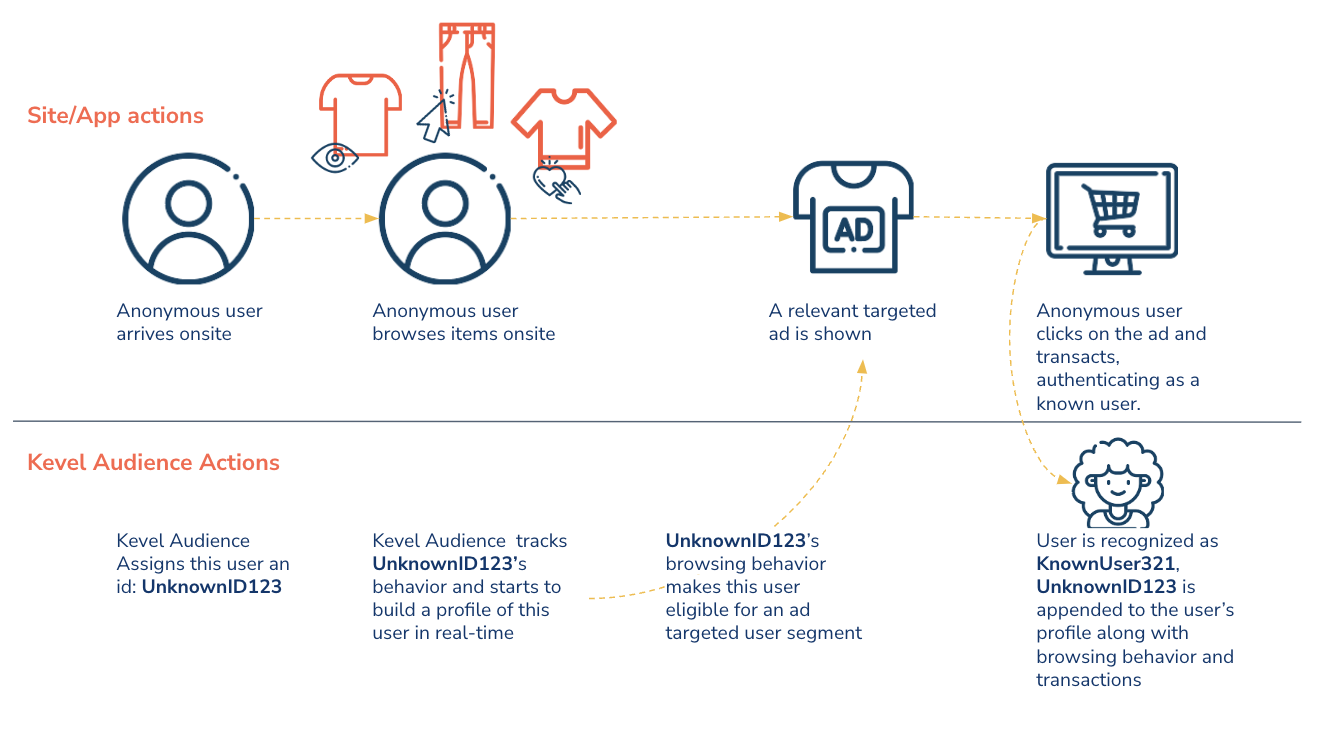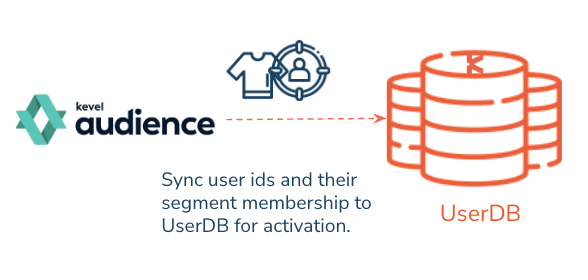User Level Attribution
Overview
Utilizing Kevel Ad Platform's Catalog enables campaign level attribution, tying media exposure to transaction. However, to truly measure your results, it's important to establish a link between transactions and individuals, regardless of device or browser used.
Kevel Audience works with Kevel Ad Platform as the user level segmentation and insight powerhouse.
Without Kevel Audience, Kevel Ad Platform relies on either a retailer-supplied identifier or a user key provided by Kevel to establish a connection between an ad event and a transaction. This places the responsibility of identity resolution of the same user across devices and login states on the retailer. In practice that means sending the transaction event to the Kevel Ad Platform using all user identifiers used during ad impressions and clicks for the purchasing customer, which can present a challenge, especially in unauthenticated scenarios and across devices. However, by leveraging Kevel Audience, not only can multiple identifiers be resolved, but Kevel Audience also enables the targeting of relevant ads to anonymous users within the same session.
For example:

When an anonymous user arrives onsite Kevel Audience assigns a unique identifier to the user. The user's browsing behavior is observed and a profile is built in real-time. If the user's behavior meets the criteria for membership in a targeting segment, the user will be served a relevant ad.
When a user interacts with the ad(the above example shows a click, but this may also be a view) and logs in, it serves as an authentication event, confirming that the previously anonymous user is now a known user. Kevel Audience seamlessly and automatically adds the anonymous identifier and the user's behavior to their known user profile. Without Kevel Audience, there is a risk of treating the anonymous user profile and the known user profile as separate entities. Moreover, if the retailer fails to append the anonymous identifier to the transaction, campaign attribution can be overlooked, resulting in missed opportunities for accurate tracking and analysis.
To recap:
- Kevel Audience builds profiles in real-time, allowing same session ad targeting of anonymous users.
- Kevel Audience helps with identity resolution, which builds a more complete picture of user behavior. Tying anonymous browsing and ad events with authenticated transactions.
Holistic user profile
In addition to the above capabilities, Kevel Audience goes a step further by enabling the ingestion of offline data. For retail media, this can encompass various types of data such as loyalty data, CRM data, and in-store transactions. By incorporating this offline data into a user's profile, retailers can gain valuable insights and further enhance their targeting and personalization strategies. This allows for a holistic understanding of customers, both online and in-store.

How Kevel Ad Platform & Kevel Audience work together
If you are already have product feeds powering Kevel Ad Platform's Catalog, you can use the same product feed as an offline import. This data provides additional product information that can be used to add context to user behavior and transactions as part of Kevel Audience's machine learning models. These models are used to build user profiles that can be activated for ad monetization. This data can also used to gain better insight for ad campaign optimization, marketing use cases, and to power data driven business decisions.

Ad monetization audiences are activated on Kevel Ad Platform as an audience segment destination. Kevel Ad Platform stores anonymized identifiers in Userdb along with segmentation membership as an attribute for targeting.

When a targeted user is onsite and a relevant ad elicits a transaction, campaign attribution is recorded on the Kevel Ad Platform and user level attribution is recorded in Kevel Audience, along with channel attribution.

Having a reliable mechanism to resolve multiple identifiers to a single user and accurately attribute transactions at the user level provides a significant advantage for your ad platform. It allows you to conduct incrementality testing, which provides valuable insights into whether your ad campaigns are truly driving sales lift compared to organic sales. By comparing the impact of your ads against the baseline, you can gain a deeper understanding of the incremental value running campaigns on your ad platform can bring to a brand.
Updated 9 months ago
